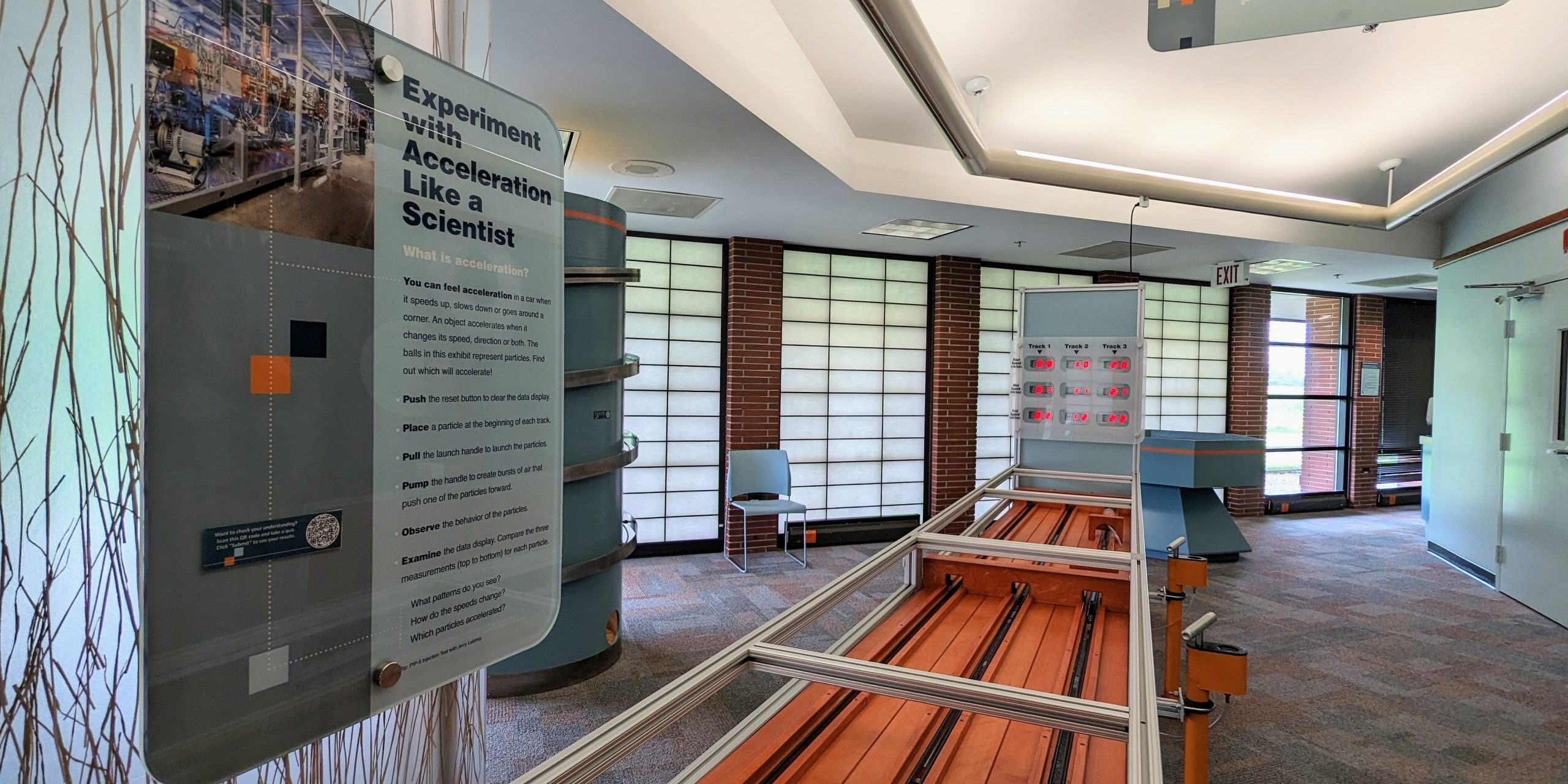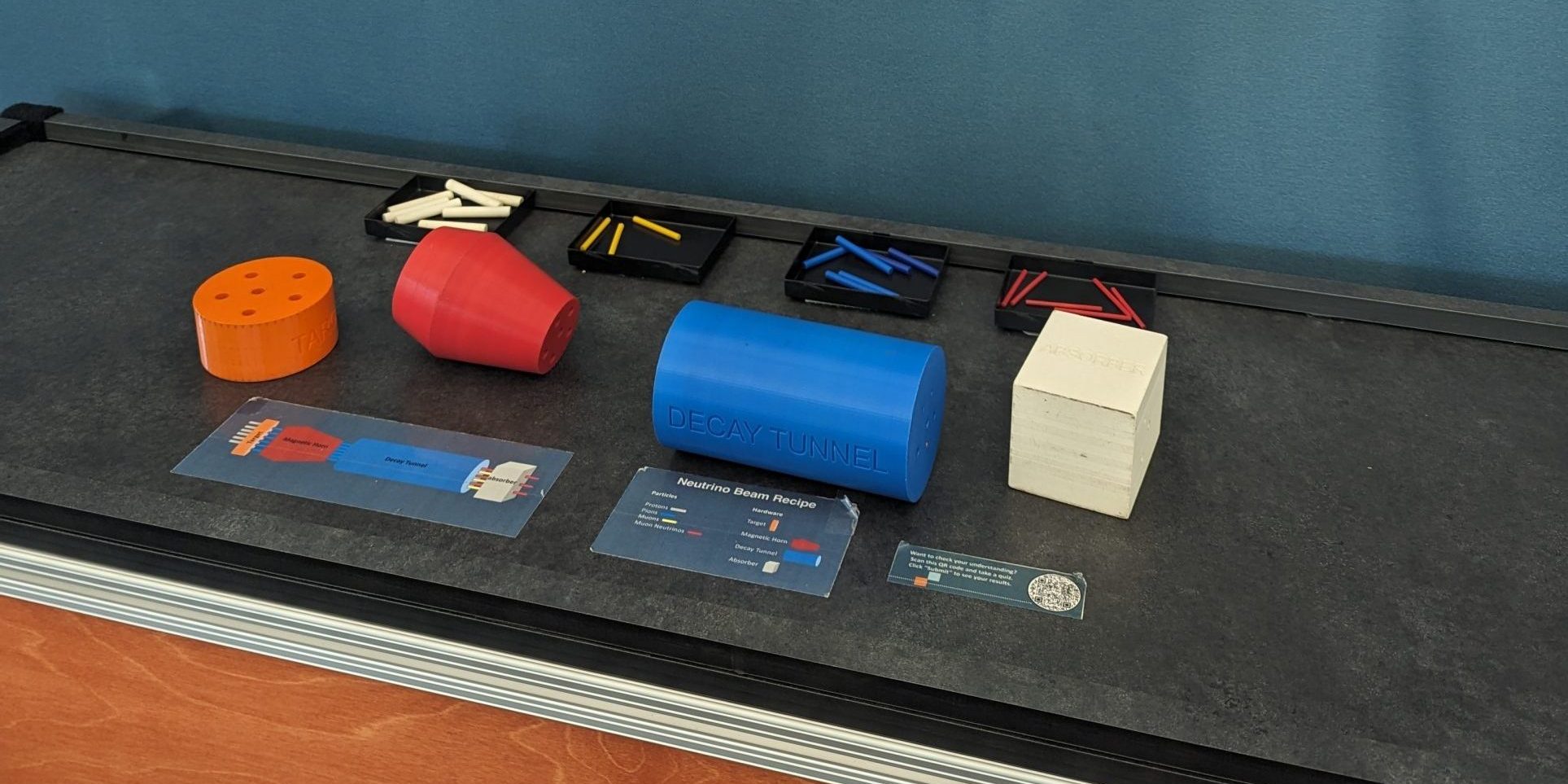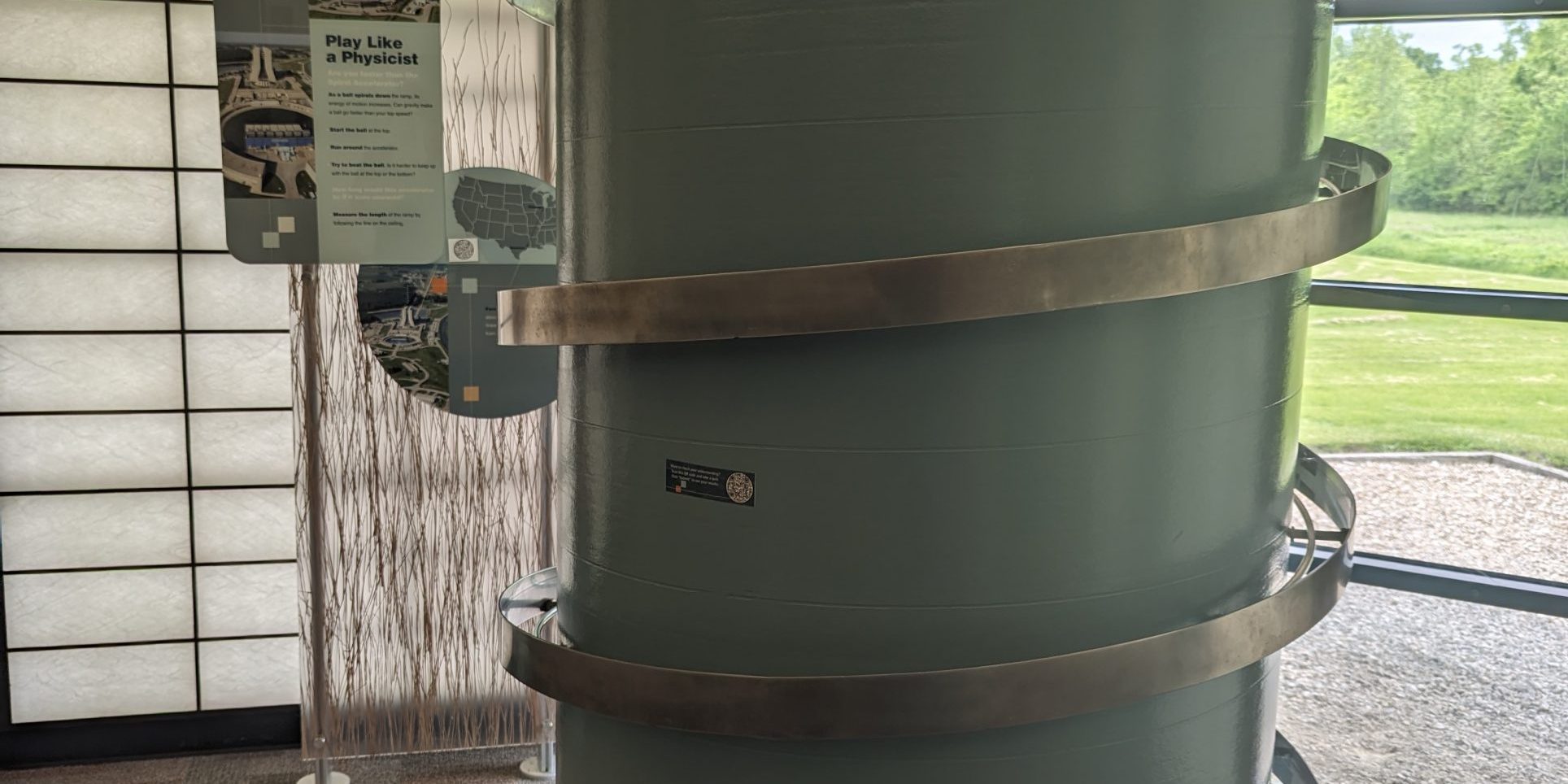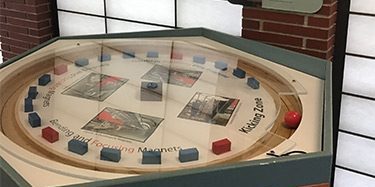This room includes linear accelerators, circular accelerators, and particle beams.
Accelerators give particles energy – they create energetic particle beams to experiment with particles and study their properties. Fermilab makes the world’s most intense neutrino beams.
Spotlighted Exhibits
Linear accelerators push beams of charged subatomic particles in a straight line and accelerate them to very high speeds. In fact, they can accelerate particles to nearly the speed of light. Fermilab scientists use accelerators to make the world’s most intense neutrino beams.
Circular accelerators take beams of charged particles, like protons, and accelerate them around a ring enclosed in a vacuum pipe. These types of accelerators are called synchrotrons. Inside synchrotrons, particles speed up by passing the same “kicking zones” several times until they reach the desired energy.
Particle physicists study nature by using particle collisions. High-energy particles have extremely small wavelengths and can probe nature at the subatomic level. The higher the energy, the closer particles come to each other, revealing the smaller details of their structure. Scientists use powerful magnets to make particles follow a circular pathway.
Accelerators allow scientists to answer questions about what our universe is made of and how it works. To probe the nature on the smallest scale possible, particle accelerators use superconducting technologies to achieve higher and higher energies. This exhibit explains how superconductors work.




